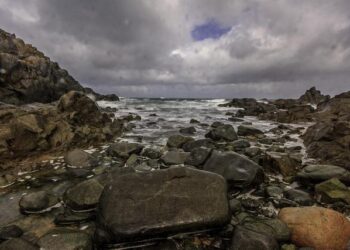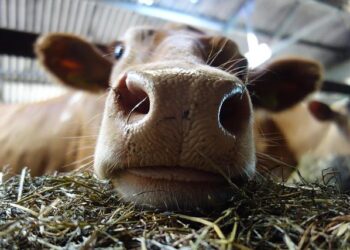Guernsey, the lush Channel Island known for its unique wildlife and temperate climate, stands out for one notable absence: native squirrels. Unlike much of the British Isles, where squirrels are common inhabitants of woodlands and parks, Guernsey’s forests remain squirrel-free. This intriguing ecological anomaly has prompted questions from naturalists and residents alike. In this article, we explore the historical, geographical, and environmental factors behind the absence of native squirrels in Guernsey, shedding light on how isolation and human influence have shaped the island’s distinctive animal population.
Origins of Guernsey’s Unique Wildlife Environment
Guernsey’s wildlife has been shaped by its geological history and isolation from the mainland. As the last Ice Age retreated around 10,000 years ago, rising sea levels transformed Guernsey into an island, severing land connections and limiting species migration. Unlike larger landmasses, Guernsey’s relatively small size and separation prevented many terrestrial animals, including squirrels, from naturally establishing populations. This isolation has helped preserve a distinctive fauna, but also created gaps in the ecosystem where certain species simply never arrived.
The island’s environment today supports a mix of native and introduced species, with a tendency towards ground-dwelling mammals and birds adapted to coastal and woodland habitats. Key factors influencing this include:
- Historical land bridges: Absence of direct land corridors limited species dispersal.
- Habitat availability: Guernsey’s limited forested areas provided less suitable homes for arboreal mammals like squirrels.
- Human intervention: Deliberate introduction or control of species over centuries altered wildlife composition.
| Wildlife Factor | Impact on Squirrel Presence |
|---|---|
| Island Size | Too small for sustainable squirrel populations |
| Forest Coverage | Limited habitat for tree-dwelling species |
| Sea-Level Rise | Separated Guernsey from potential source populations |
| Human Influence | Controlled introduction of animals; no recorded squirrel releases |
Challenges for Squirrel Species to Establish on the Island
The island of Guernsey presents a complex environment that has historically hindered the successful colonisation of squirrel species. Its geographic isolation, surrounded by the English Channel, creates a natural barrier preventing the migration of squirrels, which are not strong swimmers and rely heavily on contiguous woodland for movement. Furthermore, the island’s landscape consists predominantly of agricultural land and fragmented woodlands, offering limited continuous habitat suitable for squirrels to thrive and expand their populations.
Several additional ecological and environmental factors contribute to the challenge:
- Predation Pressure: Native predators and introduced species, such as foxes and certain bird species, limit the survival chances of any pioneering squirrels.
- Competition for Resources: Local flora and fauna compete for similar food sources, including nuts and seeds, making it difficult for squirrels to establish a stable food supply.
- Climatic Conditions: The island’s mild maritime climate, although generally favourable, involves seasonal fluctuations that may not support the complete lifecycle needs of several squirrel species.
| Challenge | Impact on Squirrel Establishment | |
|---|---|---|
| Geographic Isolation | Prevents natural migration and colonisation | |
| Habitat Fragmentation | Limits available nesting and foraging areas | |
| Predator Presence | Increases juvenile mortality rates |
| Challenge | Impact on Squirrel Establishment |
|---|---|
| Geographic Isolation | Prevents natural migration and colonisation |
| Habitat Fragmentation | Limits available nesting and foraging areas |
| Predator Presence | Increases juvenile mortality rates |
| Competition for Resources | Reduces available food supply and hinders population growth |
| Climatic Conditions | May not sufficiently support full lifecycle requirements |
Would you like me to assist with further summarization, insights, or formatting?
Conservation Strategies to Protect and Enhance Native Fauna
Efforts to safeguard Guernsey’s native wildlife focus heavily on habitat preservation and the control of invasive species that threaten local ecosystems. Authorities prioritize creating buffer zones around sensitive natural habitats, planting native flora to boost food sources, and managing woodland areas to support fauna diversity. Community engagement also plays a pivotal role, with educational programs encouraging residents to participate in conservation activities, such as monitoring wildlife and reporting sightings to research groups.
Targeted initiatives include:
- Predator control: Managing populations of non-native predators that disrupt native animal communities.
- Habitat restoration: Replanting native trees and restoring wetlands to improve biodiversity.
- Species reintroduction: Carefully assessed programs to reintroduce native species where ecological balance permits.
| Strategy | Focus Area | Expected Impact |
|---|---|---|
| Habitat Preservation | Woodlands & Grasslands | Improved shelter and breeding grounds |
| Invasive Species Control | Fauna Populations | Enhanced survival rates of natives |
| Community Engagement | Local Awareness | Stronger conservation support |
Key Takeaways
In conclusion, the absence of native squirrels in Guernsey highlights the island’s unique ecological history and the impact of geographic isolation on wildlife distribution. While nearby regions boast thriving squirrel populations, Guernsey’s limited natural habitats and historical factors have prevented these creatures from establishing a foothold. Understanding these dynamics not only sheds light on the island’s biodiversity but also underscores the broader challenges of conservation in isolated environments. As Guernsey continues to balance development with ecological preservation, the story of its missing squirrels remains a compelling example of nature’s complex interplay with geography and human influence.
















